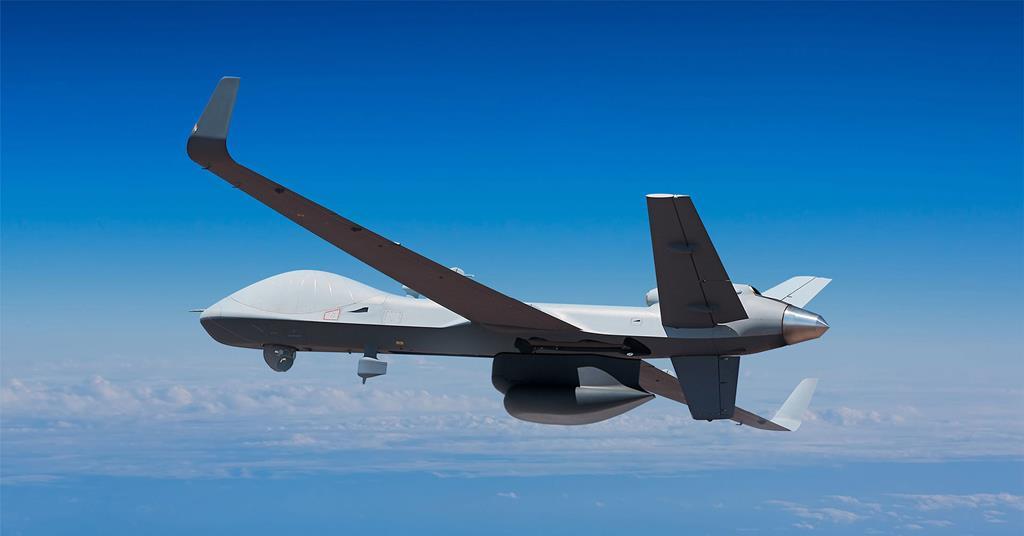Denmark plans to field four General Atomics Aeronautical Systems MQ-9B remotely piloted aircraft.
The deal was announced by the California-based uncrewed aircraft producer on 23 July, noting the acquisition has support from the NATO Support and Procurement Agency.
Denmark is now the fourth European customer set to receive the latest version of General Atomics’ combat-proven MQ-9, joining the UK, Poland and Belgium.
Elsewhere in the world, Canada and Japan have committed to fielding MQ-9Bs to support maritime patrol activities, while the US Air Force operates a small number in support of special operations.
“It’s been a very productive year for our MQ-9B platforms,” says General Atomics Aeronautical Systems president David Alexander. “I believe the extensive waters of the North Sea, Norwegian Sea and Baltic Sea of the Nordic countries make the MQ-9B a very effective tool for national maritime surveillance and security.”
The MQ-9B SkyGuardian boasts improved endurance and payload exceeding that of the older MQ-9A Reaper, and comes in a special maritime variant called the SeaGuardian. That version can be outfitted with a maritime surveillance package that includes a 360-degree maritime radar and submarine-hunting sonobuoy dispenser pods.
The MQ-9B’s anti-submarine warfare capabilities were demonstrated during the 2024 Rim of the Pacific international naval exercises in Hawaii. Such capacity was no doubt a major selling point for Denmark, which sits astride the strategic Kattegat strait that controls access to the Baltic Sea and maritime approaches to European Russia.
Unlike the combat-oriented A-model Reaper, the MQ-9B achieved military type certification from civil aviation regulators in the UK, allowing the SkyGuardian to operate without geographic restrictions in civilian airspace and over populated areas.
MQ-9s are remotely operated via satellite data links, allowing pilots and sensor operators to control the aircraft and missions systems from anywhere on Earth.
Earlier this year, General Atomics demonstrated ability to maintain that data link using a constellation of small Proliferated Low Earth Orbit (PLEO) satellites, which can allow uninterrupted connections to aircraft operating in high-latitude polar regions.
That approach uses a large number of small satellites, rather than a smaller group of larger, more-powerful relays, to build a persistent communication web around the globe. The technique was famously pioneered by SpaceX with the Starlink system.
Conventional satellite systems face limitations in the high-latitude polar regions, where the effectiveness of conventional geostationary satellite communications breaks down. PLEO constellations offer more reliable connectivity in those areas.
Countries like Canada, which plans to field 14 MQ-9Bs, say they intend to operate the remotely piloted surveillance aircraft at latitudes at least as high as 83° North.
The Arctic Circle begins at roughly 66.5° North.
General Atomics says the MQ-9B offers “pole-to-pole satellite control” and de-icing capabilities that enable operations in the harsh Arctic environs.
